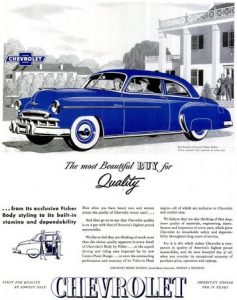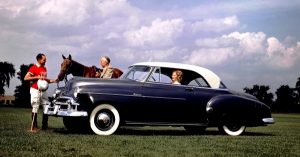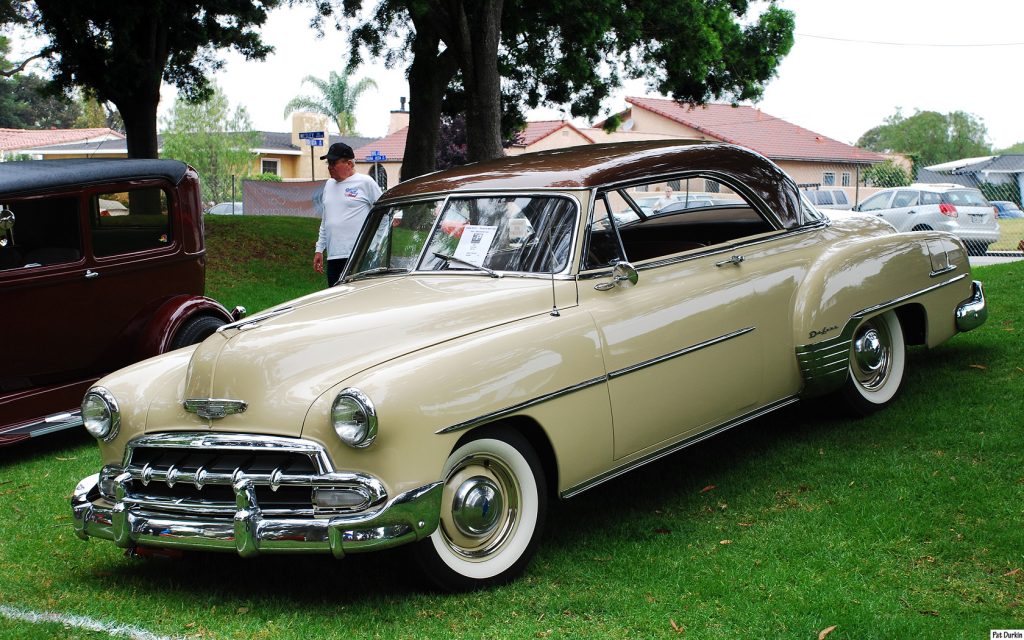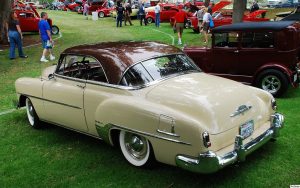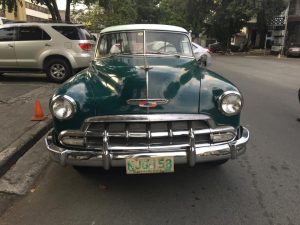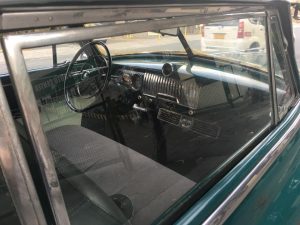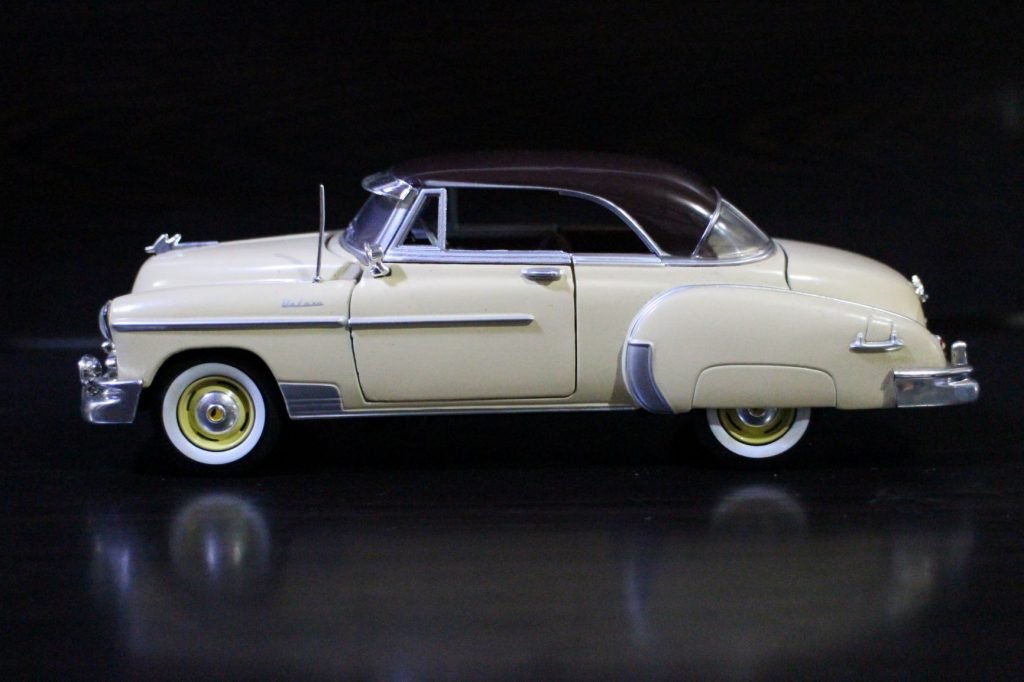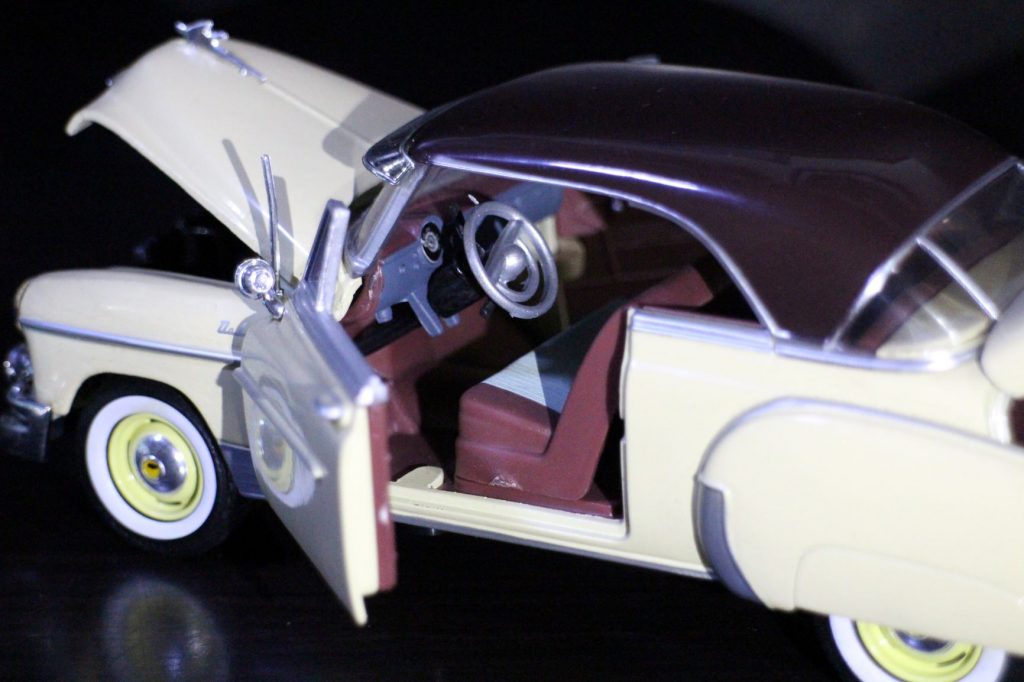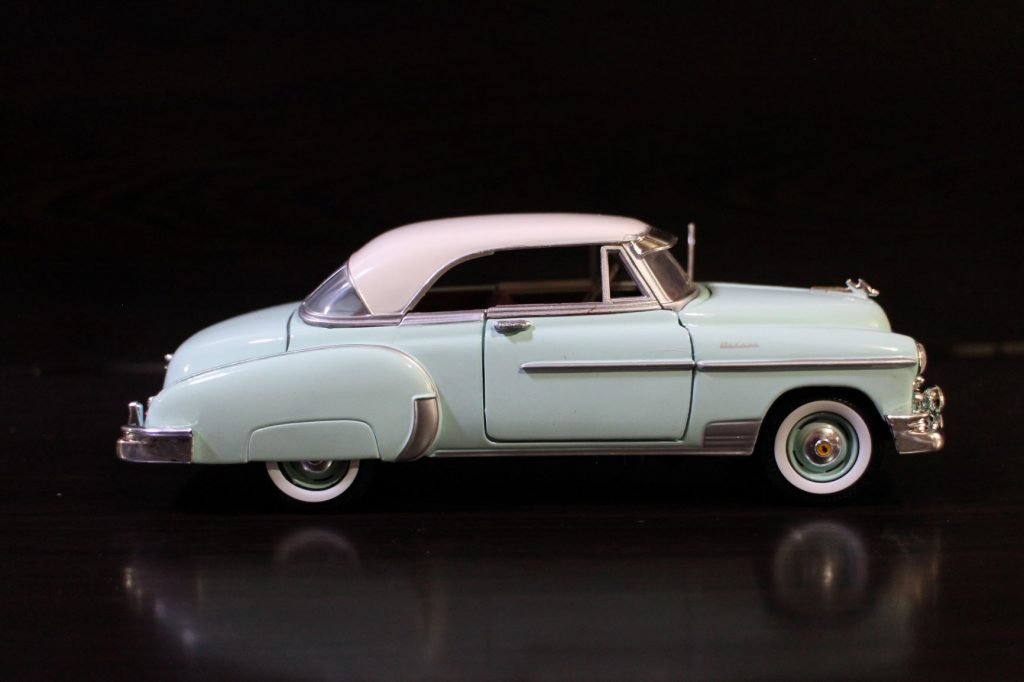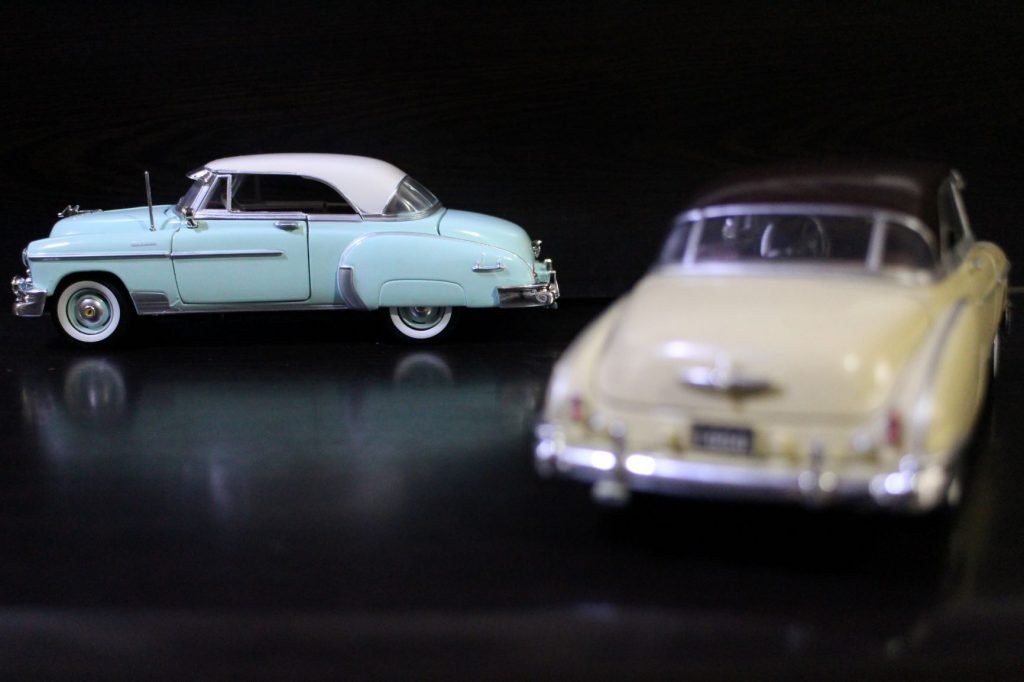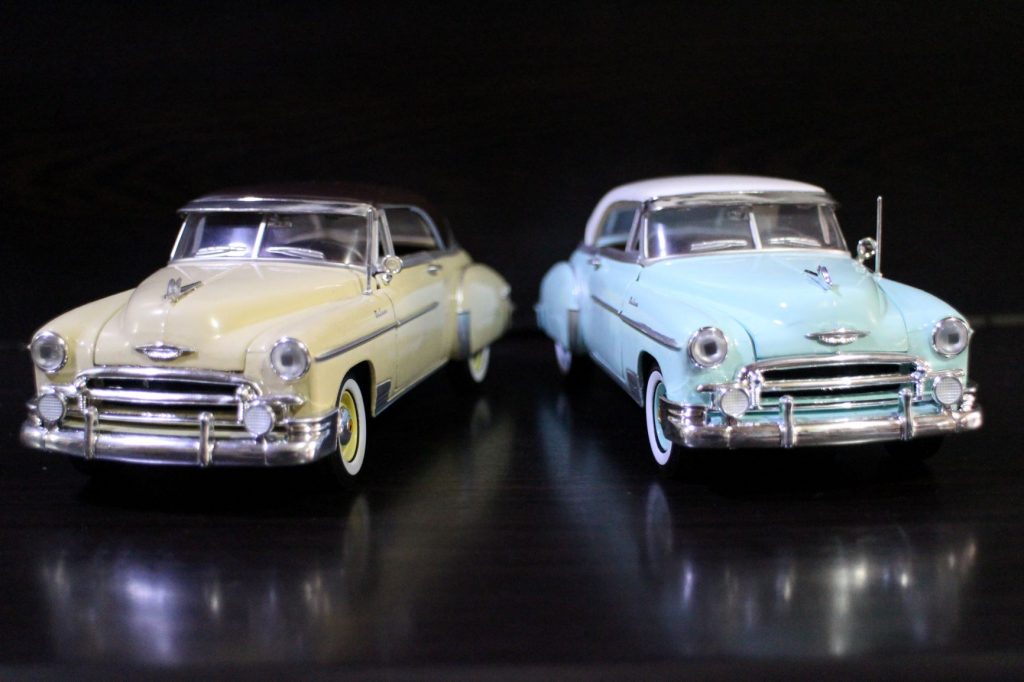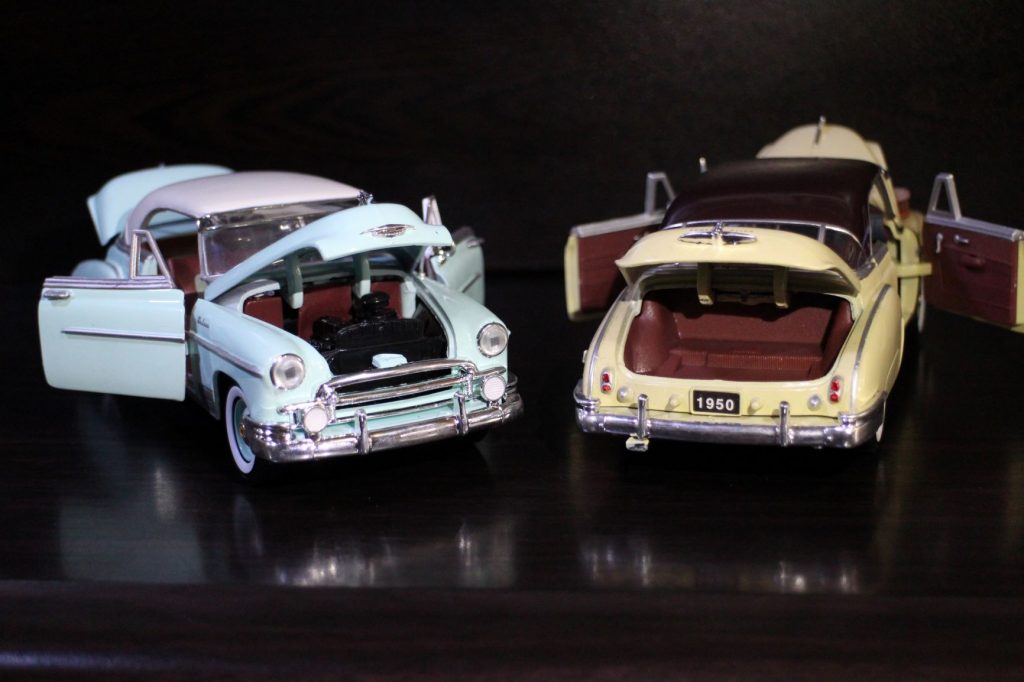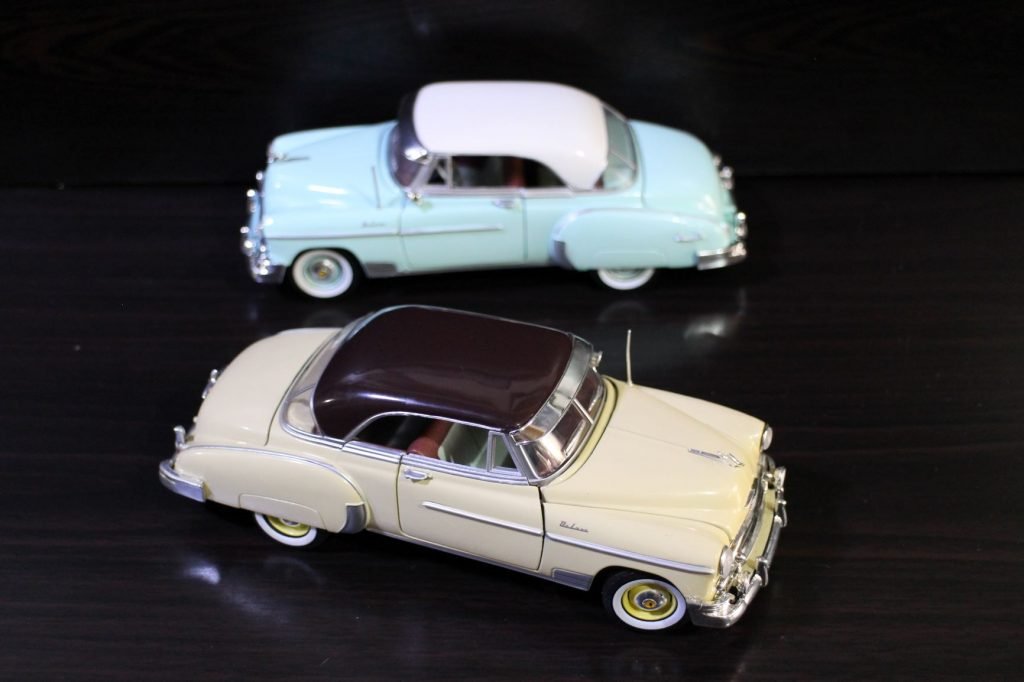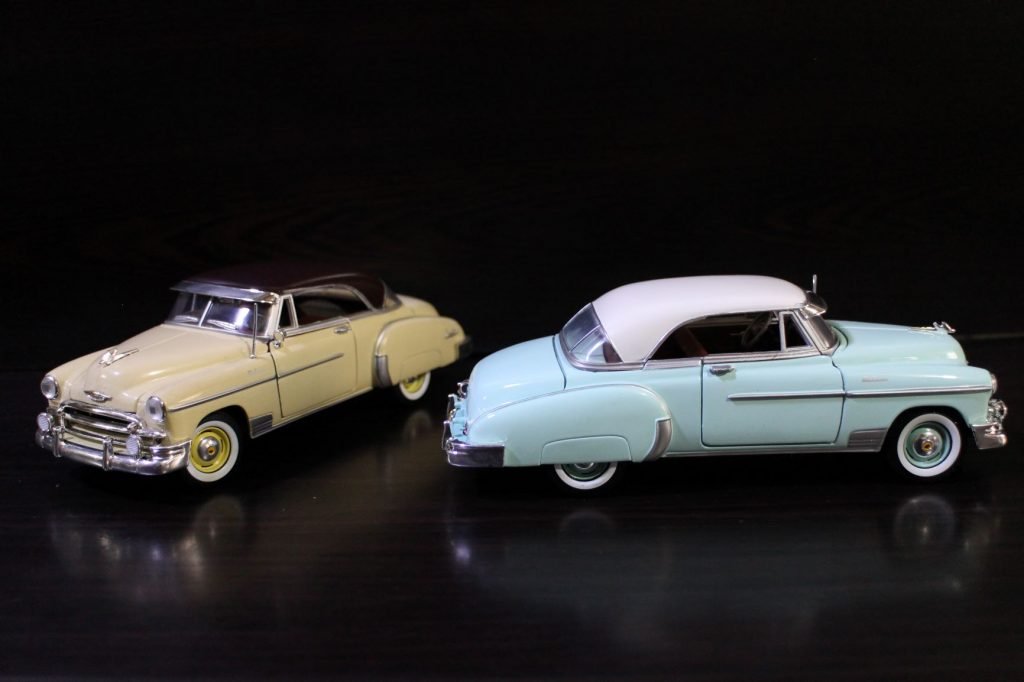In 1949, General Motors (GM) gave Chevrolet their first new styling after World War II, with the Deluxe as the up-market model. At $1,492, the 1949 Chevy Deluxe Styleline 6-passenger 2-door sedan was the most affordable model and it was equipped with the tried-and-tested 92-horsepower “Stovebolt Six” 216.5-cubic-inch (3.5-liter) inline 6-cylinder engine, 11-inch drum brakes, full instrumentation, and front stabilizers.
In 1950, Chevrolet introduced their first fully automatic transmission, the 2-speed Powerglide, which led the way for increased driving ease in America’s golden age of motoring. The Powerglide was mated to a 105-horsepower 235-cubic inch (3.8-liter) inline-six and a 3.55:1 rear differential, and was available exclusively in the Deluxe and the new hardtop coupe, the 1950 Chevy Bel Air.
Originally part of the Deluxe model range, the Bel Air shared the front sheet metal with the rest of the Deluxe range while the windshield, doors, glass, and trunk were shared with the Styleline convertible. However, the roof, rear quarters and rear windows were unique to the Bel Air, which was luxuriously appointed with upgraded two-tone cord and leather-grain vinyl trim, full carpeting, and a wide range of two-tone paint schemes.
In the ensuing years, Chevrolet introduced several comfort, convenience and styling options, including tinted glass in 1952. Popular Mechanics magazine rated the Bel Air’s fuel economy at 20 miles per gallon at 50 miles per hour (8.5 kilometers per liter at 80 kilometers per hour). From 1949 to 1952, the entire Chevy Deluxe and Bel Air range became best-sellers and was considered “America’s Choice” as a family car.
After 1952, the Special and Deluxe nameplates were retired and changed to 150 and 210, respectively, while the Bel Air became a separate model range that included two- and four-door sedans, station wagons and convertibles.
In 1955, my grandfather, Hon. Fernando B. Dizon, Sr., acquired a used 1952 Chevy Deluxe Styleline 2-door sedan. In 1963, my grandfather bought a brand-new Chevy II 4-door sedan and sold the ’52 Chevy to my father, Atty. Jaime G. Dizon, for P500. The ’52 Chevy was our family car until 1979, when my dad had to sell it because he couldn’t afford its upkeep anymore.
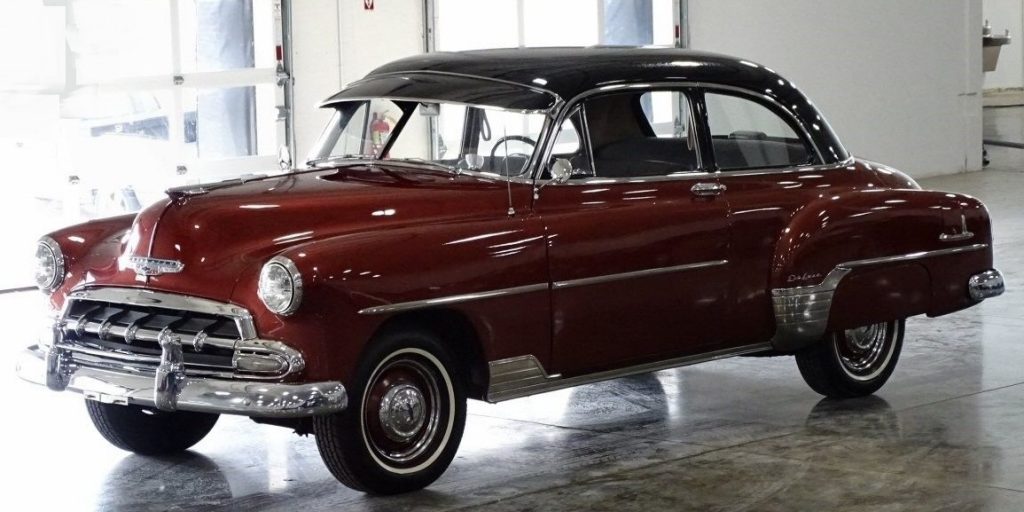
My grandpa bought a used 1952 Chevrolet Styleline Deluxe 2-door sedan in 1955 and sold it to my dad in 1963.
In 2012, I found a Motor Max “American Classics” 1:24 scale die-cast model of a 1950 Chevy Bel Air and gave it to my dad as a keepsake. Papa, as we lovingly called my father, was pleased with the model car, which was finished in two-tone beige and brown and had front wheels that can be turned by the steering wheel. Papa died in September of that year, 60 years after his beloved 1952 Chevy was made.
A few years later, my son Chevy Martin, was given a Fast Lane 1950 Chevy Bel Air 1:24 scale die-cast model by his godfather, Alvin Uy, as a Christmas gift in 2018. Chevy (my son) was ecstatic to receive his first Chevy (model car)! It had a sea foam blue body with white roof and the same interior as the Motor Max model. However, the front wheels of Chevy’s Chevy are attached to a rigid axle and does not turn unlike Papa’s Chevy.
Compared side-by-side, these two 1950 Chevy Bel Air models look like they came from the same die-casting mold. The beige-and-brown Motor Max model car is distributed by the Motormax Toy Factory, Ltd. of California, USA and made by their factory in Guangdong, China while the blue-and-white Fast Lane die-cast is distributed by Geoffrey, LLC, a subsidiary of Toys R Us, Inc. and is likewise made in China.
My son Chevy was happy with his classic Chevy model car while I’m happy just looking at these two scale model 1950 Chevy Bel Airs. During the quarantine months, these models gave me hours of enjoyment by merely looking at their details more closely and reminiscing the times when I was a little boy riding inside our ’52 Chevy, which we lovingly called “Chug-A-Boom“. These two toy cars stayed on my work desk long after I finished reviewing them.
 Power Wheels Magazine A Notch Above
Power Wheels Magazine A Notch Above

